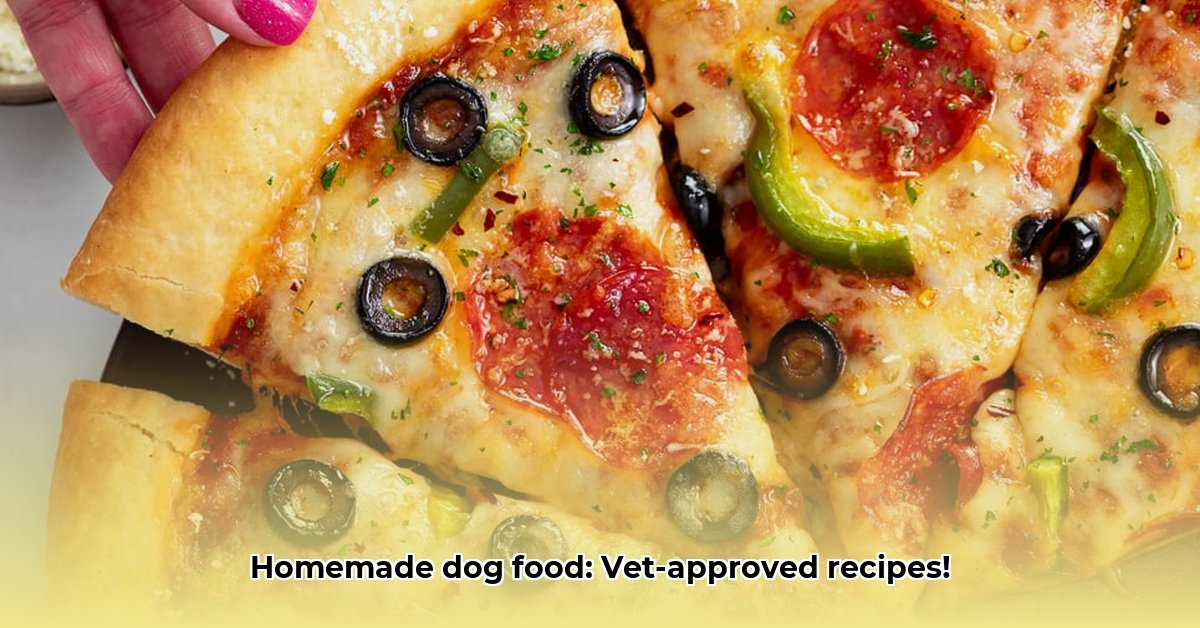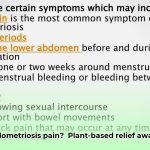Worried about your dog’s aches, allergies, or other inflammation? Thinking homemade food might help? This guide is for you! We’ll show you how to make delicious, healthy meals that can ease your dog’s inflammation and make them feel much better. We’ll cover the good and bad of homemade food, share yummy recipes that are nutritionally balanced, and give you tips from vets on making the switch safely. We’ll even have recipes tailored for older dogs or those with special needs. It’s all about giving your furry friend the best nutrition possible! Remember, though: before you change your dog’s food, always chat with your veterinarian first. For more information on anti-inflammatory ingredients, check out this helpful resource: pet food ingredients.
Understanding Inflammation and Its Impact on Your Dog
Is your best friend showing signs of aches, tummy troubles, skin irritations, or constant fatigue? These could be hints of underlying inflammation. Inflammation is a natural bodily response, but chronic inflammation can significantly impact your dog’s quality of life. Switching up their food can make a difference. Let’s explore making homemade anti-inflammatory meals for your dog, a journey best taken with the guidance of your veterinarian – they’re the experts! Dog food recipes for inflammation can be beneficial, but it’s crucial to understand the root cause first.
Inflammation in Dogs: Recognizing the Signs
Inflammation is your dog’s body’s way of saying, “Hey, something’s not right!” It’s the body’s natural defense mechanism against injury, infection, or irritation. It can manifest in various ways:
- Joint stiffness or lameness: Difficulty getting up, reluctance to jump or play.
- Skin problems: Itching, redness, hot spots, excessive scratching.
- Digestive upset: Vomiting, diarrhea, gas, loss of appetite.
- Lethargy: Reduced energy levels, decreased enthusiasm for activities they usually enjoy.
- Allergies: Watery eyes, sneezing, coughing.
While acute inflammation is a normal part of healing, chronic inflammation can lead to discomfort, pain, and even more serious health issues over time. What your dog eats plays a big role in how their body handles inflammation. Many commercial dog foods contain additives, preservatives, and fillers that, for some dogs, can actually exacerbate inflammation. That’s where a homemade, whole-food approach might shine. Could it be that the readily available food options are contributing to your dog’s ailments? Chronic inflammation causes can be better managed with a tailored diet, addressing potential triggers and providing essential nutrients.
The Power of Food: Key Ingredients for an Anti-Inflammatory Diet
Several ingredients boast anti-inflammatory properties, offering natural support for your dog’s well-being. Remember, it’s essential to work with your vet to ensure these additions are beneficial and appropriate, not harmful. They can help rule out underlying conditions and ensure your dog receives the necessary nutritional balance.
* Omega-3 Fatty Acids: The Joint Lubricants – Found in oily fish like salmon, sardines, mackerel, and flaxseed, these essential fats are vital for reducing inflammation throughout the body. They help improve joint health, support brain function, and promote healthy skin and coat. Think of them as tiny shock absorbers and building blocks for your pup’s body.
* Turmeric: The Golden Anti-inflammatory – This bright yellow spice contains curcumin, a potent antioxidant with impressive anti-inflammatory properties. It’s been used for centuries as a natural remedy. However, always talk to your vet before adding turmeric to your dog’s diet, as it might interact with certain medications. Adding black pepper can increase the absorption of curcumin.
* Ginger: The Digestive Soother – Another superstar spice, ginger is known for its ability to aid digestion and calm upset tummies. This can be especially helpful if your dog has sensitive digestion or is prone to tummy troubles. Its anti-nausea properties can also benefit dogs undergoing medical treatments.
* Antioxidant All-Stars: Blueberries, Cranberries, and Leafy Greens – These fruits and veggies are packed with antioxidants, helping protect cells from damage caused by free radicals and fighting inflammation at a cellular level. They’re like tiny superheroes, protecting your dog from the inside out and boosting their immune system.
* Quercetin-Rich Foods: Apples, Broccoli, and Berries – Quercetin is a flavonoid known for its anti-inflammatory and antioxidant effects. Including these foods can further support your dog’s fight against inflammation.
* Probiotics and Prebiotics: Supporting Gut Health – A healthy gut is crucial for overall health and inflammation management. Consider adding probiotic-rich foods like yogurt (plain, unsweetened) or kefir, and prebiotic-rich foods like asparagus and bananas, to support a balanced gut microbiome.
Could you be missing out on these natural solutions? Anti-inflammatory foods for dogs include these superstar ingredients, working synergistically to promote health and well-being.
Recipe Time! Delicious & Healthy Homemade Anti-inflammatory Dog Food
Important Note: Always consult your veterinarian before making significant changes to your dog’s diet. These recipes are merely suggestions – a starting point for you and your vet to create a personalized plan. Your vet can help you adjust these recipes, or even help create new ones, to meet your dog’s specific needs and health status. They can also run tests to check for any underlying issues and ensure your dog is getting all the nutrients they require. A board-certified veterinary nutritionist can also provide expert guidance on formulating a balanced and complete homemade diet.
Recipe 1: Salmon & Sweet Potato Delight (Perfect for Seniors & Sensitive Stomachs)
This recipe is gentle on sensitive systems, making it ideal for senior dogs or those with digestive sensitivities. The salmon provides those all-important Omega-3s, and the sweet potato is easily digestible and packed with nutrients. Adding a touch of ginger can further soothe the digestive system. Is this recipe the key to your senior dog’s comfort? Recipes for older dogs should be easy to digest and nutrient-rich.
- 1 cup cooked salmon (remove skin and carefully check for bones!) – Ensure it is wild-caught salmon for a higher Omega-3 content.
- 1 cup cooked sweet potato, mashed – Baking is preferable to boiling to retain more nutrients.
- ½ cup cooked green beans – Steaming preserves more vitamins than boiling.
- 1 tablespoon flaxseed oil (a good source of Omega-3s) – Store in the refrigerator to prevent rancidity.
- ¼ teaspoon turmeric (Check with your vet first!) – Add a pinch of black pepper to enhance absorption.
- Optional: 1 teaspoon grated ginger
Instructions: Simply combine all the ingredients in a bowl and mix well. Serve chilled or at room temperature. This recipe can be easily adjusted to suit individual preferences and dietary needs.
Recipe 2: Chicken & Brown Rice Bowl (A Versatile & Balanced Option)
This recipe is a good all-around choice for many dogs. It’s easy to digest and provides a good source of protein and complex carbohydrates. Adding a mix of colorful vegetables like carrots, spinach, and blueberries boosts the antioxidant content. Why not try this recipe for a balanced diet? Alternative anti-inflammatory diets can be easily prepared with different protein sources like turkey or lamb.
- 1 cup cooked chicken breast (shredded) – Choose organic, free-range chicken when possible.
- 1 cup cooked brown rice (brown rice is more easily digested than white) – Ensure the rice is thoroughly cooked to aid digestion.
- ½ cup cooked carrots, finely chopped – Carrots provide beta-carotene, which converts to Vitamin A.
- ¼ cup cooked spinach – Spinach is a great source of vitamins and minerals.
- ¼ cup blueberries – Full of antioxidants.
- 2 tablespoons olive oil (a source of healthy fats) – Extra virgin olive oil is preferred.
- ¼ teaspoon ground ginger
Instructions: Mix all ingredients thoroughly. You can make a larger batch and store it in the refrigerator for a few days (typically 3-4 days). Ensure proper storage to maintain freshness and prevent spoilage.
Recipe 3: Beef & Quinoa Power Bowl (For Active Dogs)
- 1 cup lean ground beef (cooked and drained)
- 1 cup cooked quinoa (high in protein and fiber)
- ½ cup chopped broccoli (steamed)
- ¼ cup chopped apple (remove seeds)
- 1 tablespoon coconut oil
- Pinch of cinnamon
Instructions: Combine all ingredients. This recipe provides sustained energy and supports muscle health.
General Cooking and Storage Tips:
- Cooking Methods: Steaming, baking, and poaching are generally preferred over frying to minimize added fats and preserve nutrients.
- Ingredient Sourcing: Opt for high-quality, fresh ingredients whenever possible. Organic options can further reduce exposure to pesticides and other harmful chemicals.
- Storage: Store homemade dog food in airtight containers in the refrigerator for up to 3-4 days or freeze for longer storage (up to 2-3 months). Thaw frozen food in the refrigerator before serving.
- Portioning: Consult with your veterinarian to determine the appropriate portion sizes for your dog based on their weight, age, activity level, and health condition.
Things to Keep in Mind: Navigating the Homemade Food Journey
Transitioning to a homemade diet takes planning and patience. Here’s what you need to know:
* Gradual Transition is Key:
- Plant-based Diet Colitis Remission: Success Stories - December 18, 2025
- Plant Based Diet Breast Cancer: Research-Based Benefits - December 16, 2025
- Plant-Based Diet Ulcerative Colitis Remission: Proven Benefits - December 15, 2025










